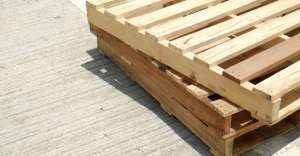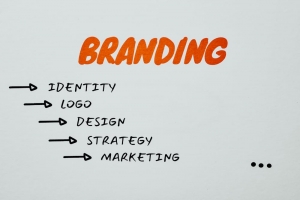Introduction
As sustainability becomes a priority in construction and design, innovative materials like WPC Plank Dubai are gaining popularity. Offering a unique blend of aesthetics, durability, and environmental benefits, WPC planks are challenging traditional materials like wood, PVC, and metal. In this in-depth blog, we'll compare WPC planks to conventional materials, explore their manufacturing process, environmental impact, and provide practical tips for choosing the right WPC planks for your project.
What Makes WPC Planks Unique?
WPC planks are a composite material made from a combination of wood fibers (or wood flour) and thermoplastics, such as polyethylene, polypropylene, or PVC. Additives like UV stabilizers, colorants, and bonding agents enhance their performance. The result is a material that offers the warmth and texture of wood with the resilience and low maintenance of plastic.
Unlike traditional materials, WPC planks are engineered to resist moisture, insects, and UV damage, making them suitable for both indoor and outdoor applications. Their versatility and eco-friendly composition make them a standout choice in modern construction.
WPC Planks vs. Traditional Materials
To understand why WPC planks are gaining traction, let's compare them to commonly used materials:
- WPC Planks vs. Natural Wood
- Aesthetics: WPC planks can closely mimic the look of natural wood, with customizable colors and textures. However, wood offers a more authentic, organic feel that some prefer.
- Durability: Wood is prone to rot, warping, and insect damage, especially in outdoor settings. WPC planks are resistant to these issues, offering a longer lifespan.
- Maintenance: Wood requires regular staining, sealing, and painting, while WPC planks need only occasional cleaning.
- Cost: Wood is often cheaper upfront, but WPC planks save money over time due to their low maintenance and durability.
- WPC Planks vs. PVC
- Aesthetics: PVC lacks the natural look of WPC planks, which combine wood-like textures with plastic durability.
- Durability: Both materials are highly durable, but WPC planks are less prone to brittleness in extreme temperatures.
- Eco-Friendliness: WPC planks often incorporate recycled wood and plastic, making them more sustainable than pure PVC, which is petroleum-based.
- Cost: PVC may be slightly cheaper, but WPC offers better value for applications requiring a natural aesthetic.
- WPC Planks vs. Metal
- Aesthetics: Metal has a modern, industrial look, while WPC planks offer a warmer, wood-like appearance.
- Durability: Both materials are durable, but metal is susceptible to rust in humid environments, whereas WPC planks are corrosion-resistant.
- Maintenance: Metal may require rust-proofing or painting, while WPC planks are virtually maintenance-free.
- Cost: Metal can be more expensive, especially for high-quality alloys, while WPC planks offer a cost-effective alternative.
The Manufacturing Process of WPC Planks
Understanding how WPC planks are made sheds light on their unique properties. The process typically involves:
- Material Preparation: Wood fibers or flour (often sourced from recycled wood or sawdust) are mixed with thermoplastics and additives.
- Blending: The materials are blended at high temperatures to create a uniform composite.
- Extrusion or Molding: The mixture is extruded or molded into planks, sheets, or custom shapes.
- Surface Treatment: The planks may be embossed with wood grain patterns or coated with UV-resistant layers for enhanced durability.
- Quality Control: The finished planks undergo rigorous testing to ensure they meet standards for strength, weather resistance, and aesthetics.
This process allows manufacturers to create WPC planks with consistent quality and tailored properties, such as fire resistance or anti-slip surfaces.
Environmental Impact of WPC Planks
WPC planks are often marketed as an eco-friendly alternative to traditional materials, and for good reason:
- Recycled Materials: Many WPC planks are made from recycled wood waste and plastic, reducing landfill waste and the demand for virgin materials.
- Reduced Deforestation: By using wood fibers instead of solid timber, WPC planks help preserve forests.
- Long Lifespan: The durability of WPC planks means fewer replacements, reducing resource consumption over time.
- Recyclability: Some WPC planks are recyclable at the end of their life cycle, further minimizing environmental impact.
However, it's worth noting that the production of thermoplastics can have an environmental footprint. Choosing WPC planks from manufacturers committed to sustainable practices can mitigate this concern.
Tips for Choosing the Right WPC Planks
- Check the Composition: Look for planks with a balanced ratio of wood and plastic for optimal strength and aesthetics. Higher-quality planks often have more wood content for a natural look.
- Consider the Application: Ensure the planks are designed for your specific use case, such as outdoor decking or indoor flooring. Some WPC planks are better suited for high-traffic areas or extreme weather.
- Look for UV Protection: For outdoor applications, choose planks with UV stabilizers to prevent fading.
- Verify Warranty: Reputable manufacturers offer warranties of 10–25 years, reflecting the product's durability.
- Compare Brands: Research different brands to find high-quality WPC planks with good reviews and certifications for sustainability and performance.
Conclusion
WPC Plank Dubai are transforming the construction industry by offering a sustainable, durable, and aesthetically pleasing alternative to traditional materials like wood, PVC, and metal. Their ability to combine the best qualities of wood and plastic makes them ideal for a wide range of applications, from decking and cladding to furniture and fencing. By choosing WPC planks, you're not only investing in a long-lasting material but also contributing to a more sustainable future. Whether you're a homeowner, architect, or contractor, WPC planks are a smart choice for modern, eco-conscious building projects.





